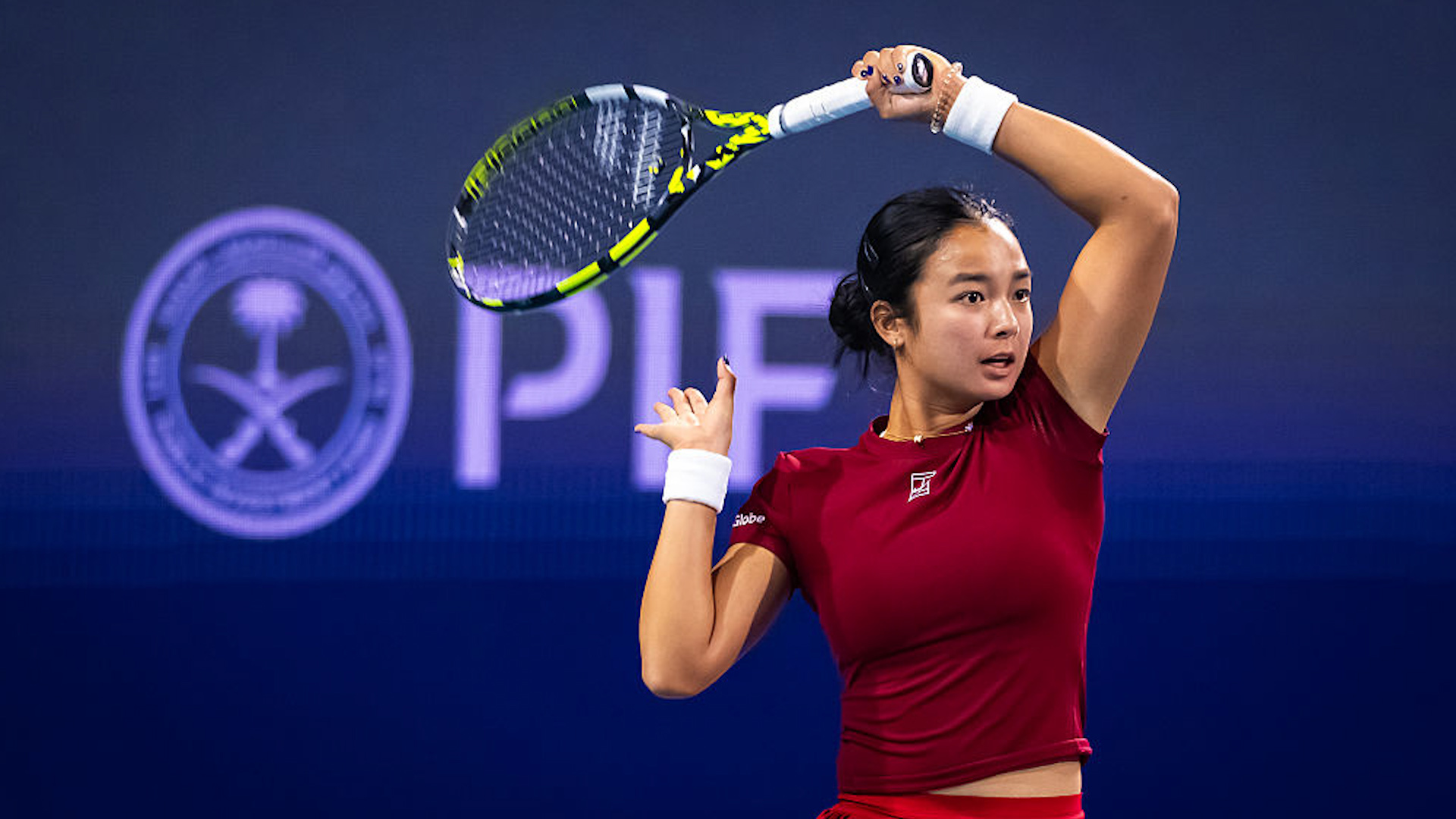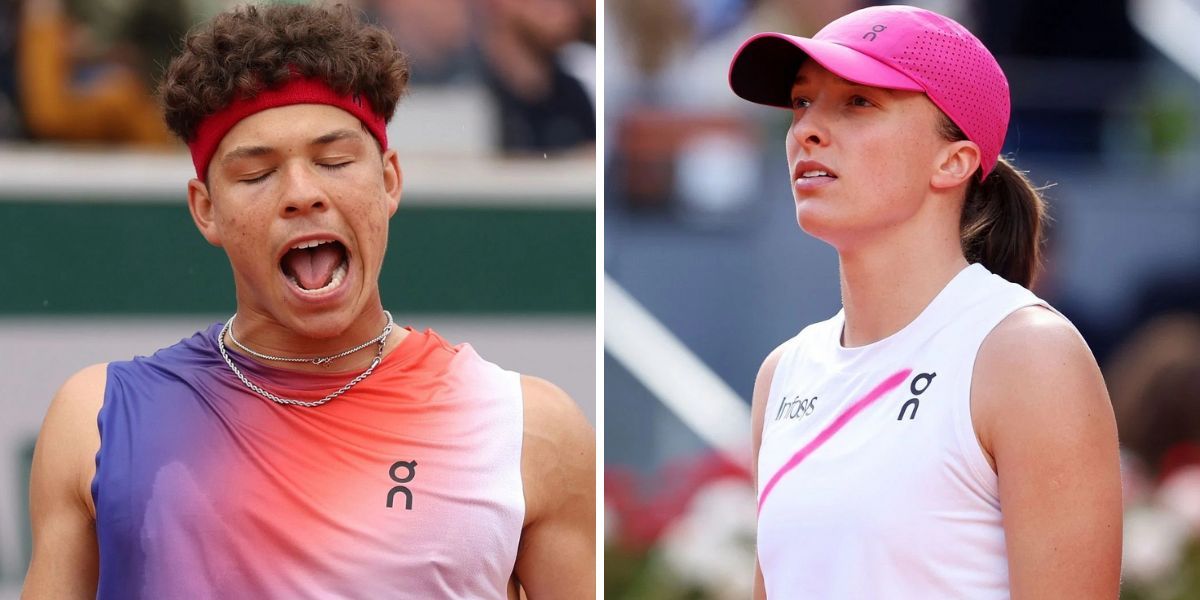Introduction:

In the cutthroat world of professional tennis, every match is a battle — not just with an opponent across the net, but often within the player themselves. For months, fans and analysts speculated: Why isn’t Bianca Andreescu performing like the Grand Slam champion she once was? The truth, as it turns out, is more shocking than anyone imagined.
Bianca Andreescu, Canada’s tennis darling and 2019 US Open champion, has been quietly nursing a debilitating injury for months — hiding the severity from even her closest fans. Now, with the truth finally coming to light, the tennis world is reeling from revelations that could reshape her career and legacy.
In this article, we dive deep into the details of Andreescu’s secret injury, the reasons she kept it under wraps, and what this means for her future on the WTA Tour. We’ll answer your top questions, provide exclusive insights, and unpack the emotional toll of a struggle kept in the shadows.
The Shocking Truth Behind Andreescu’s Disappearance
1. What Injury Was Bianca Andreescu Hiding?
Bianca Andreescu has now revealed she was suffering from a stress fracture in her lower back, a diagnosis that had been intentionally kept secret from the media. According to inside sources, the injury was first diagnosed shortly after her early exit from the 2023 Miami Open, but Andreescu chose to continue playing through pain, hoping it would improve naturally.
The injury — described by sports medicine professionals as “career-threatening if not addressed promptly” — significantly affected her mobility, service velocity, and endurance. The most alarming detail? Andreescu competed in at least five major tournaments with this undiagnosed or under-treated condition.
“I didn’t want to look weak,” she confessed in a recent interview. “I was scared people would say I’m done, that I peaked too early.”
2. Why Did She Hide It?
There are several reasons Andreescu and her team may have decided to keep the injury under wraps:
- Sponsorship Pressures: With lucrative endorsement deals on the line, admitting to a long-term injury could risk losing brand interest.
- Ranking Defense: In professional tennis, missing tournaments means lost ranking points. Andreescu risked a drop outside the top 100 — a career nightmare for any elite athlete.
- Mental Fortitude: Andreescu has long emphasized mental strength as a cornerstone of her game. Admitting to injury felt like admitting defeat — not just physically but emotionally.
The strategy, however, backfired. Her performance waned, her confidence dipped, and critics began questioning her fitness and work ethic — ironically the very criticisms she hoped to avoid.
Timeline of the Hidden Struggle
| Date | Event | Status |
|---|---|---|
| March 2023 | Miami Open | Pain begins |
| April – July 2023 | Clay season | Plays through injury |
| August 2023 | Withdrawals & silence | Growing concern |
| October 2023 | Quiet rehab begins | Media blackout |
| January 2024 | Attempted comeback | Cut short |
| May 2024 | Public reveal | Confirmation of stress fracture |
3. How Bad Was the Damage?
According to experts consulted after the reveal, stress fractures in the lumbar spine — especially in athletes under 30 — are serious red flags. Symptoms include:
- Persistent lower back pain
- Reduced core strength
- Muscle spasms and fatigue
- Inability to rotate the torso fully
A recent study published in the British Journal of Sports Medicine found that up to 18% of elite tennis players suffer from stress injuries to the spine — and recovery averages 3 to 6 months. In some severe cases, surgery is required.
Fortunately, Andreescu avoided surgery but has been under an aggressive non-invasive rehab protocol since late 2023, involving:
- Aquatic therapy
- Core muscle retraining
- Anti-inflammatory nutrition
- Restorative yoga
4. What Does This Mean for Her Career?
Now comes the million-dollar question: Can Bianca Andreescu make a full comeback?
Her fans are hopeful. But the numbers tell a cautionary tale.
- Andreescu has played only 52 matches since winning the 2019 US Open.
- Her WTA ranking plummeted from World No. 4 to outside the Top 100 in less than 12 months.
- She’s now missed three consecutive Grand Slams.
That said, tennis has seen miraculous comebacks — think Rafael Nadal, Serena Williams, or even Juan Martin del Potro. What matters now is how she manages:
- Physical workload: She’ll need to adopt a reduced tournament schedule.
- Support system: Andreescu recently hired a new physiotherapist and psychologist.
- Mental reframing: She’s now speaking openly about pain, pressure, and priorities.
“This time, I won’t sacrifice my body for short-term wins,” she said. “I’ve learned that lesson the hard way.”
Frequently Asked Questions
Q: Why didn’t her team stop her from playing?
A: Several insiders claim the team was aware but underestimated the long-term risks. Pressure to play, sponsor demands, and the belief that the injury was minor contributed to the delay in treatment.
Q: Will she play in the upcoming US Open?
A: Unlikely. Sources indicate Andreescu is targeting a post-2025 Australian Open return, focusing entirely on long-term health over quick returns.
Q: Is this the end of her Grand Slam aspirations?
A: Absolutely not. Andreescu is only 24, and with proper recovery, she still has a decade of tennis ahead of her. What’s needed now is patience, smarter scheduling, and consistent coaching.
Q: Why didn’t fans notice earlier?
A: Many did. Analysts pointed to slower court coverage, more double faults, and an unusual number of unforced errors. But without confirmation, it was mostly speculation — until now.
5. What This Teaches Us About Athlete Health
Andreescu’s secret struggle reveals an ugly truth about professional sports: athletes are expected to be invincible. Injury equals weakness in the eyes of fans, sponsors, and sometimes even their own teams.
But hiding injuries has consequences:
- It prolongs recovery.
- It damages long-term health.
- It can lead to career-ending outcomes if not addressed early.
Andreescu’s honesty now offers a powerful reminder: Transparency is strength. Fans respect resilience — but they admire vulnerability even more when it’s real and courageous.
6. How Bianca Plans to Rebuild — The Comeback Blueprint
Andreescu is taking a holistic recovery approach, combining medical rehab with mental and emotional wellness. Here’s her reported comeback strategy:
- Medical Clearance: She’s under bi-weekly evaluation from a Toronto-based spine specialist.
- Tactical Redesign: Working with a new coach to adjust her aggressive baseline style to reduce physical strain.
- Selective Scheduling: No back-to-back tournament commitments.
- Public Reengagement: Aiming to reconnect with fans via interviews, podcasts, and social media as part of her mental healing.
“This is my reset — physically and spiritually,” Andreescu posted on Instagram.
Conclusion: A Cautionary Yet Hopeful Tale
Bianca Andreescu’s shocking injury reveal has sent ripples across the tennis world — not just for what happened, but for what it says about the pressure elite athletes face in silence. Her decision to hide the injury may have cost her precious months of her career, but her brave admission marks the beginning of something more powerful: a true comeback rooted in honesty and strength.
Her story is now one of resilience, self-advocacy, and redefinition. Andreescu’s hidden battle is no longer a secret — it’s a symbol. A symbol that even the toughest champions need time to heal, and that true greatness often rises not in dominance, but in recovery.


